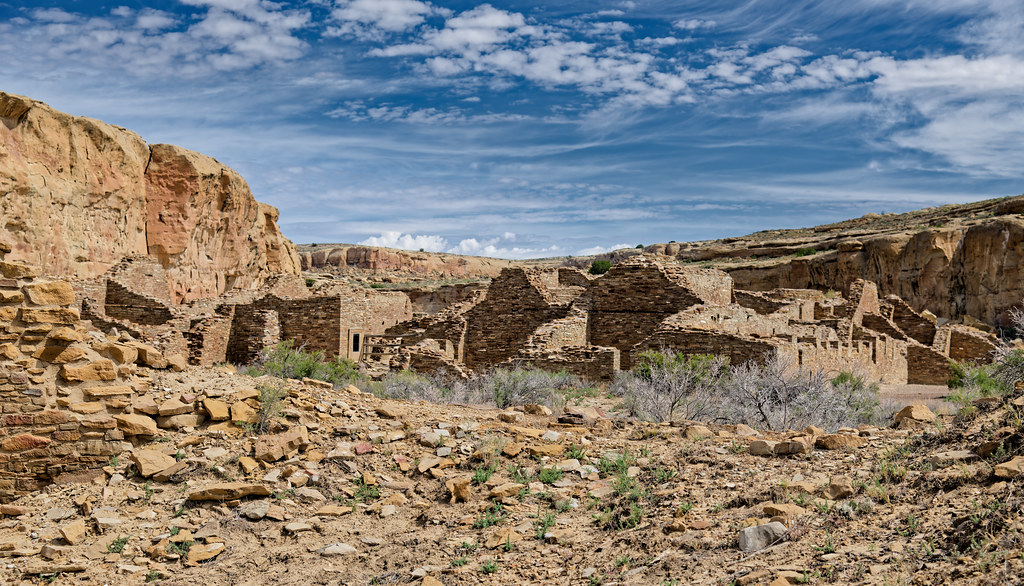#Chacoan
Photo
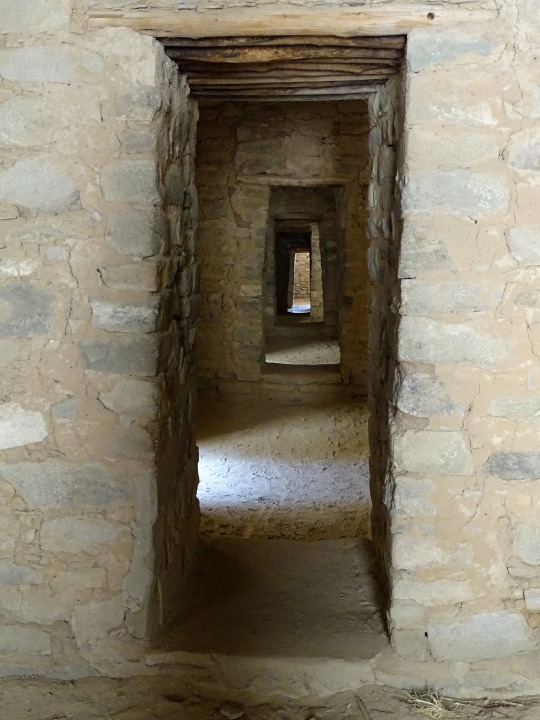


Doors of Aztec Ruins National Monument, New Mexico
Check out my visit to Aztec Ruins NM: https://wanderingjana.com/azcdchtp
#door#doors#travel#architecture#archaeology#original photography#american architecture#aztec ruins#Chacoan#chaco#11th century#my photos#photographers on tumblr#pueblo#new mexico#ruins#wanderingjana
13 notes
·
View notes
Text
The ancient Pueblo cultures of the American southwest figured out how the Sun and Moon travel through the sky and then used rock formations to create amazing Sun and Moon clocks! This is a fascinating analysis of the ‘Sun Dagger’ at Fajada Butte, a real Editor’s Choice not to be missed.
25 notes
·
View notes
Text

Chacoan peccary Catagonus wagneri
Observed by lillstugan, CC BY-NC
425 notes
·
View notes
Photo

Rarest Animals In The World That Are On The Brink Of Extinction
Chacoan Peccary (Catagonus Wagneri)
Wikimedia Commons
#wikimedia commons#photographer#chacoan peccary#catagonus wagneri#peccary#animal#mammal#wildlife#nature#extinction#endangered
24 notes
·
View notes
Text

Grzimek's Animal Life Encyclopedia, vol. 11, Mammals II. 1972. Illustrated by Peter Barrett.
1.) Patagonian mara (Dolichotis patagonum)
2.) Chacoan mara (Dolichotis salinicola)
3.) Capybara (Hydrochoerus hydrochaeris)
4.) Pacarana (Dinomys branickii)
5.) Mountain paca (Cuniculus taczanowskii)
6.) Lowland paca (Cuniculus paca)
7.) Red acouchi (Myoprocta acouchy)
8.) Black agouti (Dasyprocta fuliginosa)
9.) Red-rumped agouti (Dasyprocta leporina)
#rodents#patagonian maras#chacoan maras#capybaras#pacaranas#mountain pacas#lowland pacas#red acouchi#black agoutis#red-rumped agoutis#Peter Barrett
352 notes
·
View notes
Photo

The four doorways, Pueblo Bonita, San Juan Co, NM. Photo: Don Page (2022). This masterpiece of Chacoan architecture was built around 850 CE
[Scott Horton]
* * * * *
“The animacy of the world is something we already know, but the language of animacy teeters on extinction-not just for Native peoples, but for everyone. Our toddlers speak of plants and animals as if they were people, extending to them self and intention and compassion-until we teach them not to. We quickly retrain them and make them forget. When we tell them that the tree is not a who, but an it, we make that maple an object; we put a barrier between us, absolving ourselves of moral responsibility and opening the door to exploitation. Saying it makes a living land into "natural resources." If a maple is an it, we can take up the chain saw. If a maple is a her, we think twice.”
― Robin Wall Kimmerer, Braiding Sweetgrass
#Don Page#Scott Horton#Pueblo Bonita#San Juan Co NM#Chacoan architecture#native american#Robin Wall Kimmerer#Braiding Sweetgrass#quotes
58 notes
·
View notes
Text
i really try not to be judgmental of people based on their ability to correctly identify animals because i understand that not everyone is going to have a lot of knowledge in that area and thats ok. like if you call a leopard a jaguar i genuinely do not care they do look similar and while they are easy to tell apart once you do know the difference you have to know what to look for. i am sure that i have made mistakes on a similar level with things i am not well versed in. HOWEVER i did overhear someone at the zoo call a takin a hyena and. i am sorry but there are no words.
#i dont judge you for not knowing takins but a HYENA???#on a related note though even though i dont judge people for not identifying the animals correctly but i do find it interesting to listen..#...to what they are able to correctly identify and what they arent#and with the ones they arent what species they are mistaken for#idk i feel like it gives a bit of a window into how the animals are being percieved#like ive overheard multiple people call the chacoan peccaries porcupines#they definitely arent but it is interesting to me that its a somewhat common mistake#idk it would be an interesting thing to do a study on
1 note
·
View note
Video
Wide-Angle, Panoramic Setting for Chetro Ketl (Chaco Culture National Historical Park) by Mark Stevens
Via Flickr:
A setting looking to the east while taking in views and walking around the ruins present in the Chetro Ketl area of Chaco Culture National Historical Park. I later worked with control points in DxO PhotoLab 7 and then made some adjustments to bring out the contrast, saturation and brightness, as well as cropping portions of the foreground and skies above for a wide-angle feel to this setting in northern New Mexico.
#Ancestral Puebloans#Azimuth 72#Blocks#Blue Skies#Blues Skies with Clouds#Chaco Culture National Historical Park#Chaco Interior Wall#Chaco-San Juan Basin#Chacoan Culture#Chetro Ketl#Cliff#Cliff Face#Cliff Wall#Cliffs#Colorado Plateau#Day 2#Desert Landscape#Desert Mountain Landscape#Desert Plant Lifes#DxO PhotoLab 7 Edited#Intermountain West#Landscape#Landscape - Scenery#Log and Stone Construction#Looking East#Mesa#Nature#New Mexico and Mesa Verde National Park#Nikon D850#No People
2 notes
·
View notes
Text

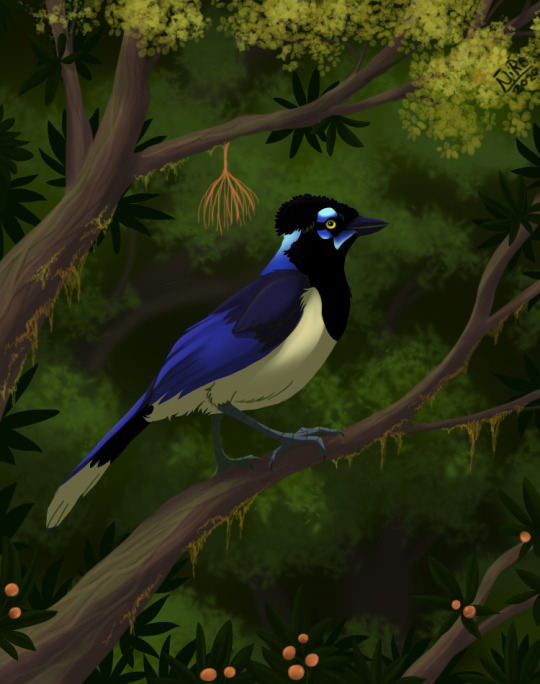

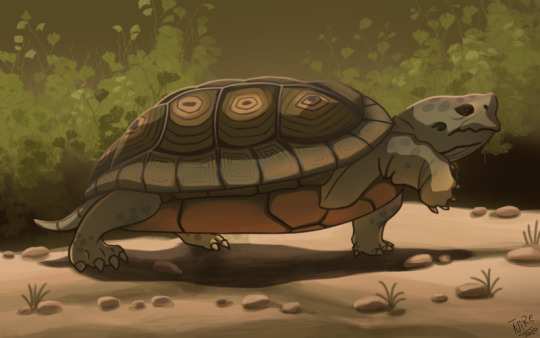

Various pictures from my "Weekly obscures" series (that I actually do when I feel motivated, as i never wanted it to become a pressure) done in 2020 and 2021.
White-tailed mongoose, Plush-crested jay, Chacoan mara, patagonian tortoise and Bleeding heart dove.
Kind of in the mood to go back to this series again.
Apologies for the disappearance <3 I had to take care of some RL things.
Also, thank you all a ton for all the notifications and follows! <3 much appreciated :)
#dove#bleeding heart#bird art#tortoise#patagonian#mara#chacoan mara#rodents#reptiles#mongoose#white-tailed mongoose#urraca#plush crested jay#2020#2021#nothofagus-obliqua#weeklyobscures#biodiversity
13 notes
·
View notes
Text

Last week, we had a young Chacoan peccary (or "tagua") born to parents Pebbles and Cheerio on our Chacoan peccary habitat! This is a Species Survival Plan (SSP) recommended birth to one of the two females that arrived from San Diego and were introduced to our tagua herd earlier this year.
In fact, this is the first birth of this species at the Phoenix Zoo since 2014 and it marks our return to active participation in breeding per SSP recommendations.
Our newest arrival along with the rest of the herd is visible at the Chacoan peccary exhibit so stop by and enjoy the cuteness!
📸: David Wagner Photography
2 notes
·
View notes
Text

CREATURE. THIS IS A REAL OPOSSUM I WANNA PET IT LOOK AT THE BABY
0 notes
Text

Pécari du Chaco
Lieu : Parc zoologique de Paris
#animaux#animaux sauvage#wild animals#photo#photo animalière#animals photography#animals#cochon#pig#pécari#sanglier#peccary#wild boar#pécari du chaco#chacoan peccary#mammifère#mammal
0 notes
Text




The Chacoan peccary is so elusive that scientists believed it was extinct until its “discovery” in 1975. Today, only 3,000 remain in the [...] forests and lagoons of the Gran Chaco region, which stretches across northern Argentina, Paraguay and southern Bolivia, and comprises more than 50 different ecosystems.
Micaela Camino, who works with the Indigenous Wichí and Criollo communities to protect the animals and their land rights in Argentina, knows how difficult to find they can be. She has only seen one Chacoan peccary, or quimilero, in 13 years [...], but has fallen in love with the critically endangered mammal [...]. “I was told that the Chacoan peccary was extinct outside protected areas when I first started,” says Camino. “So when we found it, I thought it was great. We set up monitoring to find more in one of the most isolated parts of the dry Chaco. But then the loggers started to come.”
---
The Gran Chaco, South America’s second-largest forest after the Amazon, is one of the most deforested places on Earth.
Every month, more than 133 square miles is lost, cleared for vast soya farms and cattle ranches that export to markets in the US, China and Europe – including UK supermarkets, according to a joint Guardian investigation in 2019. However, the loss is largely ignored on the international stage, receiving little conservation money or celebrity attention in comparison with the Amazon.
---
The area is home to charismatic species such as the maned wolf, the giant armadillo and the jabiru, many of which are not found anywhere else on Earth.
At current rates of deforestation, the mosaic of life in the Gran Chaco could collapse entirely. The loss of the Chacoan peccary would be guaranteed this time. Unlike the Amazon, there are few academic studies on tipping points and the forest’s waning ability to support itself as the climate changes and land is cleared, but people who live here are seeing the changes. [...]
---
In Paraguay, the success [of farming and ranching] [...] has transformed the country into one of the most important beef producers in the world, largely at the expense of the forest, dubbed “the green hell” by early settlers from Canada.
“The Gran Chaco has been at a crossroads for a long time,” says Gastón Gordillo, a professor of anthropology at the University of British Columbia. “The 2007 forest law in Argentina did manage to slow some deforestation, but it also created the paradox by establishing legitimate ways of destroying the forest.” [...] However, a new motorway in Paraguay appears likely to open up more of the region to ranching. “The agribusiness sector in Argentina is very powerful,” says Gordillo [...]
For the Chacoan peccary, research indicates there are only 30 years left to save the species, with current deforestation rates meaning all of its habitat outside protected areas will have gone by 2051.
---
Headline, images, captions, and text by: Patrick Greenfield. “Deforestation piles pressure on South America’s elusive Chacoan peccary.” The Guardian. 31 January 2023. [Bold emphasis and some paragraph breaks added by me.]
304 notes
·
View notes
Photo

Chacoan peccary Catagonus wagneri
Observed by musalem, CC BY-NC
14 notes
·
View notes
Text
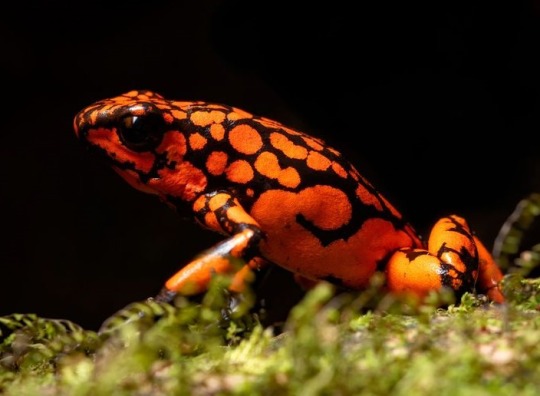
Chacoan Poison Frog (Oophaga solanensis), family Dendrobatidae, endemic to NW Colombia
Poisonous.
photograph by Cristian Torica
72 notes
·
View notes
Text
Trying something new! A mini podcast to some videos I’ve taken. This one’s at Salmon Ruins.
31 notes
·
View notes
